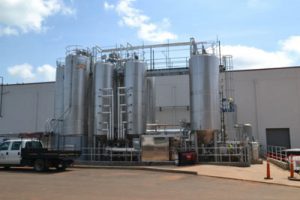Late in the construction phase of a North Carolina candy factory, a large stainless-steel process water tank imploded during system testing. The subject tank was designed to hold hot, fresh water at sub-boiling temperatures for use downstream in the ingredient mixing process. A combination of valves and system control elements were designed to operate the system, maintain water temperature, and control flow as required.

During the site inspection, the EIS engineer assigned to the project learned that the building management system had not yet been fully setup, so there was no historical controls data available to provide clues as to the state of the system prior to the failure. Through conversations with the construction team involved in system testing at the time of the loss, it was discovered that the subject tank had been filled to about the midpoint with 200°F water shortly before the incident.
Subsequently, the construction team was using the control system to individually actuate various valves throughout the system. Through review of the construction drawings and system schematics, it was determined that the heat exchanger was not activated when the valve to the tank opened, which allowed cold water to be dumped into the tank.
The tank was inspected and found to be equipped with an atmospheric vent at the top, designed to provide relief in the event of a sudden pressure change. Disassembly of the vent revealed that it was equipped with an internal filter. During post-inspection analysis, it was discovered that the filter media used


